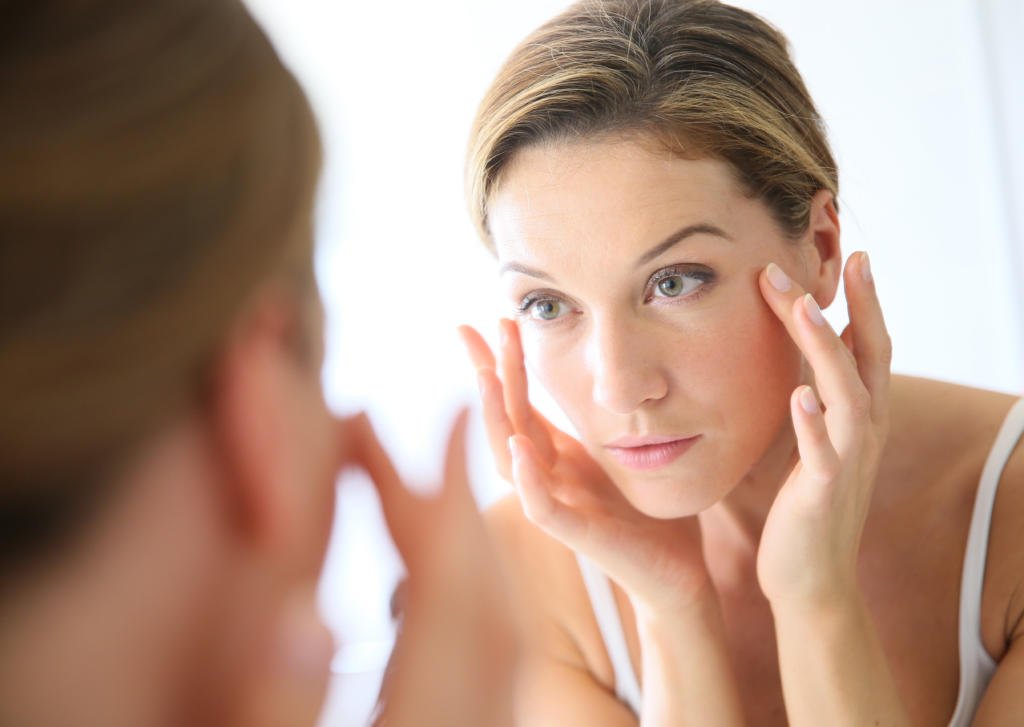
How do you know when it’s time to consider a facelift? When the droops seem droopier? When the sags feel saggier? When you’re counting facial folds like the age rings on a tree stump? Could there be other ways to give your face a boost? The decision to undergo any type of surgery should be made with serious consideration and research. Dr. Robinson and the Robinson Facial Plastic Surgery (RFPS) team welcome an opportunity to discuss all options for rejuvenating your face, including facelifts and treatment with injectables.
In fact, facelift surgery can usually be complemented by follow-up treatments with injectable fillers, enhancing the surgical results and helping to extend the benefits of the surgery. Combining a facelift procedure with strategic injection of a product such as Juvederm? or Restylane? brings maximum impact.
Mythical Misinformation
One of the biggest misconceptions about a facelift seems to be that it’s sort of a one-act trick characterized by pulling the skin a tight as possible. (Cue loud, honking buzzer noise) False! No way, no how. First of all, pulling the skin too tight would turn your face into some sort of cartoonish mask and leave horrible scars. Secondly, this wouldn’t work long-term anyway as the delicate tissue could not maintain such intense pressure and would eventually result in thickened wide scars.
(Cue ominous, rubberband-snapping noise) Not pretty.
A successful facelift requires tightening the facial muscles underneath the skin. When you feel like your face is falling down, you’re really noticing the underlying muscular laxity as it caves to the pull of gravity. No amount of skin treatment can yield satisfactory improvement if the framework underneath needs attention. Those muscle fibers are the foundation upon which your miraculously intricate, beautiful face depends for strength and structure.
Dr. Robinson assesses facelift candidates by evaluating the face in three distinctive aesthetic units — upper, mid, and lower. Each of these sections hold unique muscle formations prone to individual patterns of aging:
• Upper — Includes forehead, browline, upper & lower eyelids.
Surgical options include endoscopic browlift, mid-forehead lift, and blepharoplasty.
• Mid — Region defined by nose and cheeks.
Signs of aging here usually benefit from filler injections.
• Lower — Encompasses everything below the nose.
Jawline, jowls and neck profile are areas of surgical focus in a lower facelift.
The Natural Truth
While the surgical tightening of facial muscle tissue yields dramatic improvement, the face may still benefit from the use of fillers into certain areas, particularly in the midface region. Many of the characteristic signs of aging occur from loss of volume as fat pads shift or disappear — such as in the cheeks and nasolabial folds. So, when these spots appear to sag, they don’t need pulling, they need a refill. An in-office treatment with injectables does just that.
The latest formulations of fillers contain blends of hyaluronic acid (HA), a substance naturally present in the body that functions both as cushion and as a moisturizer to keep tissue hydrated and supple. HA-based products address multiple cosmetic needs by adding soft volume and more of the body’s own gentle support to those areas which appear problematic or lacking.
Putting It All Together
Directly after facial surgery, you will be quite swollen so it may not seem as though filler is necessary. However, by the 6 to 8 week follow-up appointment, you could be ready for the injections that will give your face a final rejuvenating boost and add additional volume.
Dr. Burke Robinson & The Robinson Facial Plastic Surgery team will help you devise a long-term plan that works to fit your individual needs and concerns. Schedule a consultation to get ideas about the possibilities for uncovering your best look. 770-667-3090



